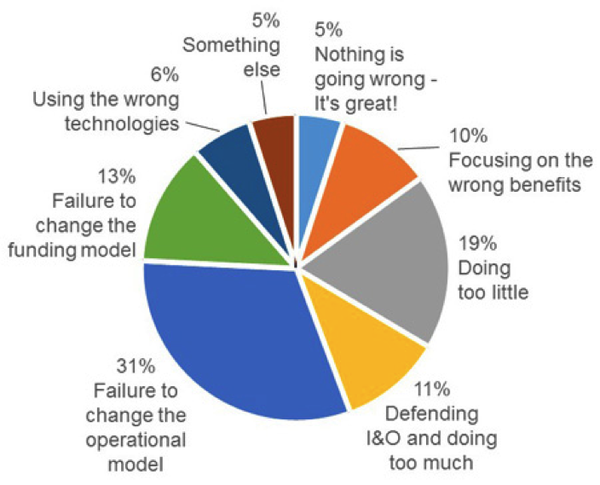Private cloud's very public failure

No wonder private cloud vendors have started calling themselves "hybrid" clouds: the private cloud vision has failed -- utterly and completely.
Gartner analyst Tom Bittman asked why 95% of private clouds are failing, but the answer seems clear: the very notion of a privately provisioned cloud service is contradictory and nearly always doomed.
Unfortunately, the odds of failure may skyrocket when enterprises turn to OpenStack.
Fail early, fail often
Roughly five years ago, Amazon Web Services (AWS) executive Andy Jassy spotlighted the problem with private clouds: "Companies usually are not able to provision accurately the amount of data center capacity that they require, and this problem recurs when they create their own internal cloud infrastructure."
In theory, it shouldn't be this way. As Dean Hampstead told me, "A large company should be able to do private cloud cheaper than public." And, at some point, companies will find it advantageous to bring computing in-house at a certain scale. As Twitter's Chris Aniszczyk suggested, "Private cloud benefit can be relative to size/scale."
But probably not for your company... or most.
If the whole purpose of cloud computing is to enable elasticity of resources to drive business flexibility, setting up an internal cloud (as opposed to provisioning data center resources) simply won't get an enterprise far. Companies often dress up virtualization as cloud and predictably fail to get promised cloud benefits.
As Apprenda's Chris Gaun pointed out:
"The[re] are... traps organizations fall into if when they decide to use VMs + automation (like Chef/Puppet/VMware). This route is attractive to customer specifically because it relies heavily on virtualization, it lets anything run inside of it, is very infrastructure focused, and doesn't require changing how you do business. While this will feel more comfortable to customers, it can also lead to failure."
And oh, such spectacular private cloud failures there are.
Private cloud lets enterprises pretend to be innovative, embracing pseudo-cloud computing even as they dress up antiquated IT in fancy nomenclature.
But when Gartner surveyed enterprises that had deployed private clouds, only 5% claimed success:

Unfortunately, these failures are nearly guaranteed for those determined to go it alone with OpenStack, the reigning champion of open-source clouds, according to a recent Zenoss survey.
OpenStack not the solution
Popularity, however, doesn't translate into successful.
As I've written before, OpenStack's community strength and popularity is also its Achilles Heel. An increasing number of contributing companies are trying to steer OpenStack in highly divergent directions, making it hard for the newbie to figure out how to successfully use OpenStack. No wonder, then, that Joyent's Bryan Cantrill hinted that the widespread failure of private clouds may be "due to OpenStack complexities."
He may be onto something.
In fact, things have gotten so bad, as early OpenStack pioneer Randy Bias highlighted, that companies looking to embrace "vanilla OpenStack" won't find any stock distribution. There is none.
Instead, OpenStack continues to evolve at a frantic pace, and not in any consistent, singular direction. There's no meaningful definition of "OpenStack," as the components a particular vendor or enterprise can or should use will vary considerably.
Though companies look to OpenStack to reduce vendor lock-in and accelerate innovation, the reality, said Bias, is that any successful OpenStack deployment necessarily brings proprietary baggage with it. The right strategy, he noted, is to "Dial into the right level of 'lock-in' that you are comfortable with from a strategic point of view that meets the business requirements."
The problem for would-be private cloud builders, however, is that this simply exacerbates the complexity that already plagues them.
Bringing order to private cloud chaos
It may be that a company like Red Hat will be able to give enterprises a trusted source for OpenStack, as the company has done for Linux. Or maybe HP or Mirantis will fill that role, as both rival Red Hat's contributions to the OpenStack code base.
But even if they succeed in streamlining the OpenStack experience, there's a far more profound problem with the private cloud that OpenStack and its peers can't solve: the very idea behind a "private cloud" is broken. While not all applications can or should run on public clouds like AWS, Microsoft Azure, or Google Cloud Platform, an ever-increasing percentage of applications are finding their way to public clouds, while enterprise IT struggles to build effective clouds.
Ultimately, line of business executives and developers may solve this issue for IT by simply refusing to use less efficient resources, whether called "data center" or "private cloud." In this race for convenience, anything that feels harder than the public cloud seems certain to fail.


